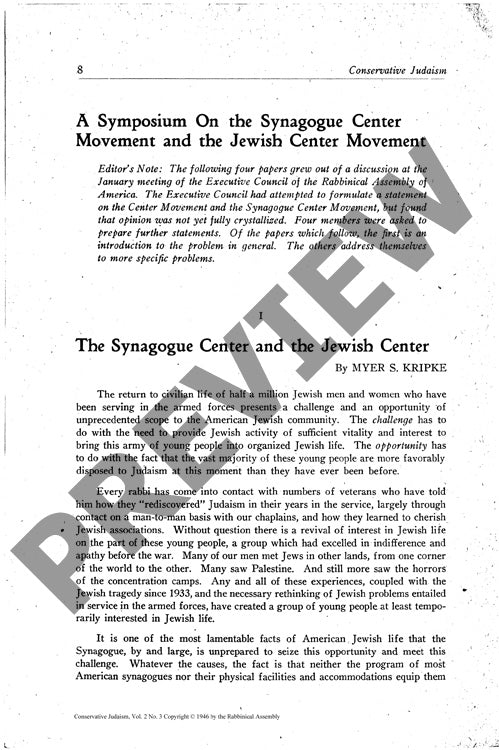The Synagogue Center and the Jewish Cent
Couldn't load pickup availability
In the aftermath of World War II, American Jewish communities faced a critical challenge: how to meaningfully engage returning veterans who had discovered renewed connection to Judaism during their military service. The competing visions of the Jewish Center Movement and Synagogue Center Movement emerged as institutional responses, creating an ideological tension that would shape American Jewish life for decades. Through a symposium-based analysis combining organizational assessments, leadership interviews, and impact studies from the Rabbinical Assembly of America's Executive Council, clear patterns emerged. While the Jewish Center Movement successfully filled social and recreational voids left by traditional synagogues, it inadvertently fostered secular environments that distanced Jews from religious practice. Most American synagogues lacked both physical infrastructure and comprehensive programming to serve the full spectrum of Jewish life—religious, educational, cultural, social, and recreational. The National Jewish Welfare Board's Center Movement gained prominence precisely because synagogues remained focused on formal religious activities while overlooking youth social needs. The research demonstrates that synagogues must evolve into multifaceted Synagogue Centers to effectively compete with secular institutions and maintain Jewish continuity. This transformation requires expanded rabbinical training in community programming and administration, strategic facility planning incorporating recreational spaces, and systematic efforts to influence existing Jewish Centers toward more religiously-oriented programming with personnel committed to Jewish survival and synagogue centrality.

More Information
-
Physical Description
-
Publication Information
Published 1946
ISBN
-
Publication Credits
Myer Kripke

